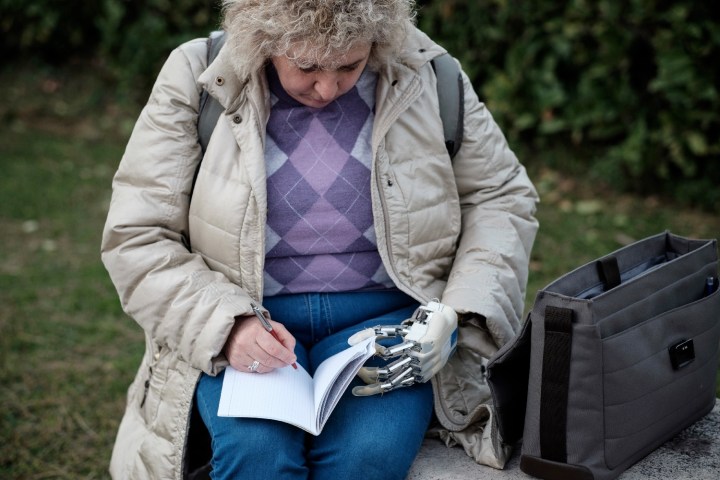
That’s why a recent project carried out in Rome is so exciting. A partial amputee named Almerina Mascarello, who lost her left hand in an accident nearly a quarter century ago, was given the world’s first bionic hand with a sense of touch that can be worn outside the laboratory. The hand is a collaboration between engineers, neuroscientists, surgeons, and electronics and robotics specialists from Italy, Switzerland, and Germany. Not only is the hand able to detect whether an object is soft or hard when it grasps it, but it can actually convey this information to the user. This is achieved through a computer carried in a rucksack by the wearer that takes information from the hand and then relays it the brain via miniatures electrodes implanted in Mascarello’s upper arm. Using the hand, she was able to recognize the firmness of objects she touched.
“We ‘translate’ the information recorded by the artificial sensors in the hand into stimuli delivered to the nerves,” Silvestro Micera, a professor of Translational Neuroengineering at the Ecole Polytechnique Fédérale de Lausanne School of Engineering, told Digital Trends. “The information is then understood by the brain, which makes the patient feeling pressure at different fingers.”
Mascarello was selected for the study after expressing her interest and undergoing a medical assessment to gauge her suitability. She was able to keep the hand for a period of six months. “It worked very well with her, she learned to master the technology soon,” Micera continued.
The team has now reclaimed the bionic hand and is working to further develop it, particularly in terms of miniaturizing the components so that it can be commercialized. According to the team involved, Mascarello has already said she hopes to continue using it once the project is completed.


